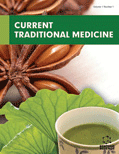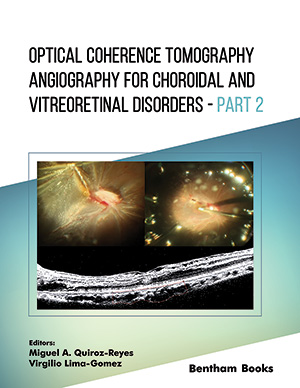Abstract
Background: Soybean (Glycine max (L.) Merr.) is an important industrial crop and the fourth major crop in the world which is a rich source of isofavones, including glycitein in the human diet. Soybean has been associated with beneficial effects in the prevention of cancer, osteoporosis, cardiovascular diseases and menopausal symptoms. Isoflavones class phytochemicals have been extensively studied in the scientific fields due to their estrogenic potential.
Methods: Scientific information on glycitin for its biological potential and therapeutic effects has been collected and analyzed in the present work. Scientific data on glycitin has been collected from the databases such as Google, Google Scholar, PubMed, Science Direct, and Scopus in the present work and analyzed for their therapeutic potential using terms such as flavonoid and glycitin.
Results: Scientific data analysis revealed the biological importance and therapeutic benefit of glycitin in medicine. Glycitin also called 4′-hydroxy-6-methoxyisoflavone-7-D-glucoside has been found to be present in the Soy products. Glycitin exhibits chemo-preventive, cardio-protective and anti-osteoporosis effects. Glycitin revealed beneficial effects on diabetes, acute lung injury, bone, cognitive performance, breast cancer, skin, immune system, enzymes, prostaglandin and taste receptors. However, its ligand binding assay, cytoprotective effect and pharmacokinetic parameters were also studied in the present work. Analytical data signified the importance of analytical tools for qualitative and quantitative analysis of glycitin in medicine.
Conclusion: Scientific data analysis revealed the therapeutic effectiveness of glycitin in medicine.
Keywords: Glycitin, diabetes, acute lung injury, bone, cognitive performance, breast cancer, skin, immune system, enzymes, prostaglandin, taste receptors.
[http://dx.doi.org/10.1016/S2221-6189(13)60123-7]
[http://dx.doi.org/10.1007/s11655-013-1595-3] [PMID: 24092244]
[http://dx.doi.org/10.1016/S2221-6189(13)60141-9]
[http://dx.doi.org/10.1016/S2221-6189(13)60011-6]
[http://dx.doi.org/10.1016/S2222-1808(12)60124-8]
[http://dx.doi.org/10.1016/S2221-6189(13)60145-6]
[http://dx.doi.org/10.1590/S0102-695X2012005000101]
[http://dx.doi.org/10.1016/j.lwt.2012.02.017]
[http://dx.doi.org/10.5455/jcmr.20170611101442]
[http://dx.doi.org/10.1016/j.foodchem.2006.11.047]
[http://dx.doi.org/10.2174/2210298101666210804141644]
[http://dx.doi.org/10.1016/S2221-1691(12)60205-6]
[http://dx.doi.org/10.1590/S0102-695X2013005000007]
[http://dx.doi.org/10.1038/emm.2016.167] [PMID: 28303029]
[http://dx.doi.org/10.3892/etm.2016.3696] [PMID: 27882117]
[PMID: 26339345]
[http://dx.doi.org/10.1007/s13765-014-4155-4]
[http://dx.doi.org/10.1080/09168451.2014.955453] [PMID: 25209298]
[http://dx.doi.org/10.1016/j.intimp.2019.105749] [PMID: 31306981]
[http://dx.doi.org/10.1111/j.1745-7254.2005.00161.x] [PMID: 16115375]
[http://dx.doi.org/10.1248/bpb.24.368] [PMID: 11305597]
[http://dx.doi.org/10.1007/s10753-020-01210-3] [PMID: 32222871]
[http://dx.doi.org/10.1017/S0007114509990201] [PMID: 19480732]
[PMID: 15492830]
[http://dx.doi.org/10.1002/ptr.5313] [PMID: 25758427]
[http://dx.doi.org/10.1089/jmf.2013.3040] [PMID: 25230138]
[http://dx.doi.org/10.1080/00498254.2016.1195028] [PMID: 27312150]
[http://dx.doi.org/10.1007/s10529-011-0739-9] [PMID: 21898127]
[http://dx.doi.org/10.3892/ijo.2013.2032] [PMID: 23900272]
[http://dx.doi.org/10.1002/jssc.201600050] [PMID: 27059876]
[http://dx.doi.org/10.1055/s-2002-20263] [PMID: 11859455]
[http://dx.doi.org/10.1021/jf202816u] [PMID: 21942422]
[http://dx.doi.org/10.1016/j.thromres.2008.07.011] [PMID: 18786699]
[http://dx.doi.org/10.1002/ptr.4970] [PMID: 23526725]
[http://dx.doi.org/10.1007/s00216-010-4206-6] [PMID: 20936271]
[http://dx.doi.org/10.1016/j.jpba.2018.09.011] [PMID: 30216793]
[http://dx.doi.org/10.1002/mnfr.200800170] [PMID: 19437481]
[http://dx.doi.org/10.1271/bbb.70296] [PMID: 18071265]
[http://dx.doi.org/10.1016/j.jchromb.2011.01.026] [PMID: 21345747]
[http://dx.doi.org/10.1093/jaoac/89.4.1158] [PMID: 16915859]
[http://dx.doi.org/10.1271/bbb.68.51] [PMID: 14745163]
[http://dx.doi.org/10.1111/1750-3841.14159] [PMID: 29870059]
[http://dx.doi.org/10.1093/chromsci/bmw033] [PMID: 27021208]
[http://dx.doi.org/10.1093/chromsci/bmu045] [PMID: 24872524]
[http://dx.doi.org/10.1093/chromsci/bmx062] [PMID: 28977409]
[http://dx.doi.org/10.1016/j.jpba.2014.10.004] [PMID: 25459947]
[http://dx.doi.org/10.5740/jaoacint.15-112] [PMID: 26651559]
[http://dx.doi.org/10.1016/S0021-9673(03)01184-1] [PMID: 14521308]
[http://dx.doi.org/10.3797/scipharm.1410-02] [PMID: 26839824]
[http://dx.doi.org/10.1016/j.foodchem.2012.06.011] [PMID: 22980879]
[http://dx.doi.org/10.1016/j.chroma.2008.04.069] [PMID: 18501366]
[http://dx.doi.org/10.1039/C5FO00785B] [PMID: 26299642]
[http://dx.doi.org/10.1021/jf402097y] [PMID: 23898976]
[http://dx.doi.org/10.1016/j.chroma.2005.03.066] [PMID: 16038195]
[http://dx.doi.org/10.1002/pca.781] [PMID: 15508833]
[http://dx.doi.org/10.1002/jssc.200500102] [PMID: 16138685]
[http://dx.doi.org/10.1007/s00216-007-1606-3] [PMID: 17899029]
[PMID: 17017161]
[http://dx.doi.org/10.1016/j.chroma.2014.04.090] [PMID: 24835762]
[http://dx.doi.org/10.1016/S0021-9673(01)01144-X] [PMID: 11587334]
[http://dx.doi.org/10.1093/jaoac/84.6.1865] [PMID: 11767157]
[http://dx.doi.org/10.1002/jms.1867] [PMID: 21182215]
[http://dx.doi.org/10.1007/BF02976633] [PMID: 12135104]
[http://dx.doi.org/10.1093/jaoac/83.3.635] [PMID: 10868587]
[http://dx.doi.org/10.1016/j.talanta.2012.07.070] [PMID: 23141344]
[http://dx.doi.org/10.1093/jaoac/86.1.72] [PMID: 12607743]
[http://dx.doi.org/10.1021/jf071010n] [PMID: 17708647]
[http://dx.doi.org/10.1016/j.chroma.2005.05.070] [PMID: 16114238]
[http://dx.doi.org/10.1016/j.jpba.2006.03.012] [PMID: 16631335]
[http://dx.doi.org/10.1007/s10787-017-0381-9] [PMID: 28791538]
[http://dx.doi.org/10.1021/jf025626i] [PMID: 12452666]
[http://dx.doi.org/10.5740/jaoacint.17-0104] [PMID: 28766479]
[http://dx.doi.org/10.1270/jsbbs.19027] [PMID: 31988620]
[http://dx.doi.org/10.3390/molecules24010074] [PMID: 30587803]
[http://dx.doi.org/10.1002/biof.552029201] [PMID: 17673827]
[PMID: 19350824]
[http://dx.doi.org/10.1016/j.fitote.2006.11.002] [PMID: 17343991]
[http://dx.doi.org/10.1590/S0100-879X2009000600011] [PMID: 19448904]
[http://dx.doi.org/10.1016/j.jchromb.2012.01.008] [PMID: 22305973]
[http://dx.doi.org/10.1038/s41598-019-46817-1] [PMID: 31316115]
[http://dx.doi.org/10.1016/j.bjp.2015.12.004]
[http://dx.doi.org/10.1016/j.foodres.2012.11.015]































